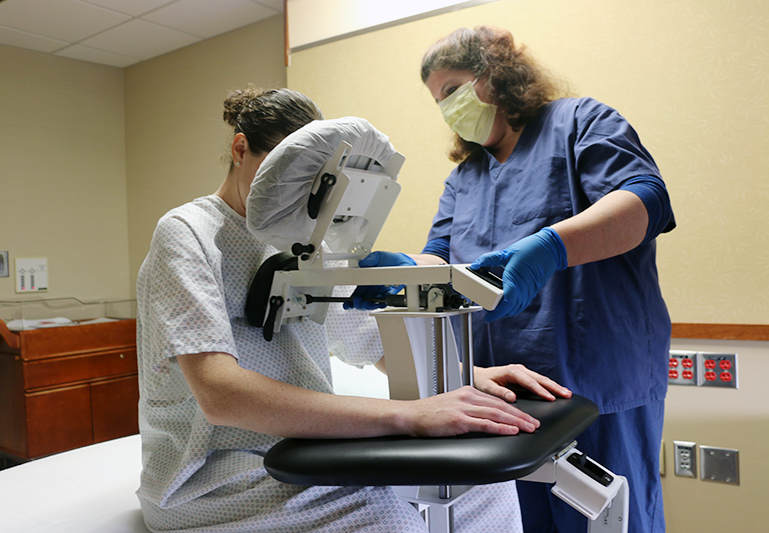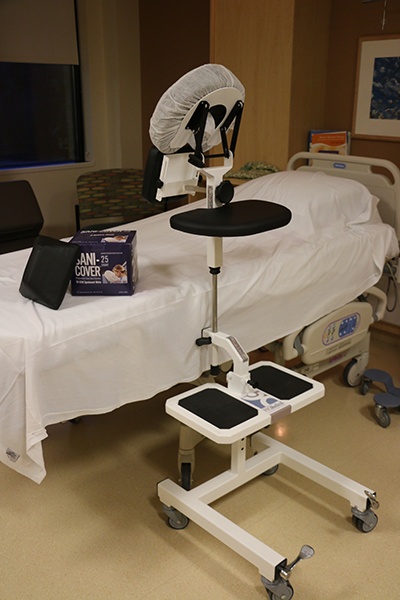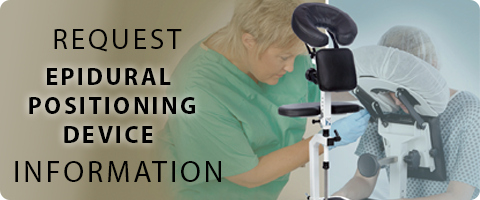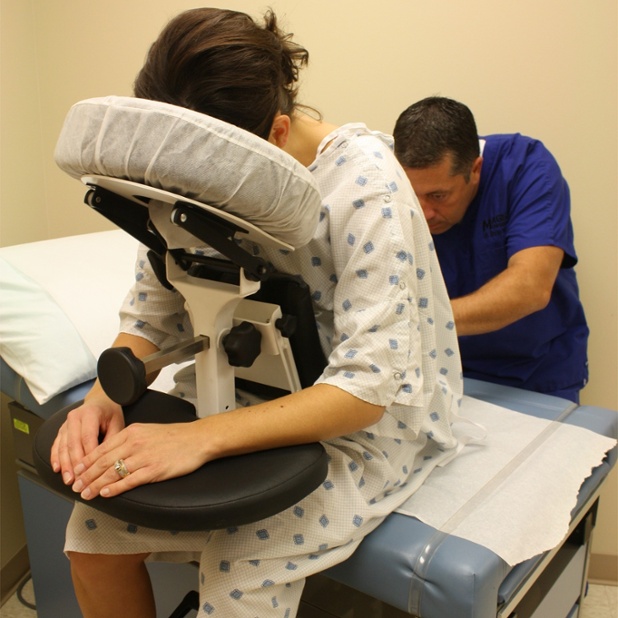A common scenario plays out just before epidural or spinal block procedures: Patient A sits bedside awaiting the needle placement of an epidural or spinal block. The nurse wheels over a movable stool so the patient may rest his/her feet on the stool. Next, the nurse brings over a free-standing bedside table to the seated patient and stacks several pillows for the patient to lean over to create a flexed spinal position. The challenge is to hold the footstool in place while keeping the patient's upper body in a static and stable position. The nurse or caregiver often must hold the patient in position supporting some of the patient's body weight to prevent movement during needle placement, which is not ideal for either staff or patient. Patients are often nervous, in pain, unpredictable and sometimes sedated and may move unexpectedly putting themselves and the nurse or caregiver at risk.
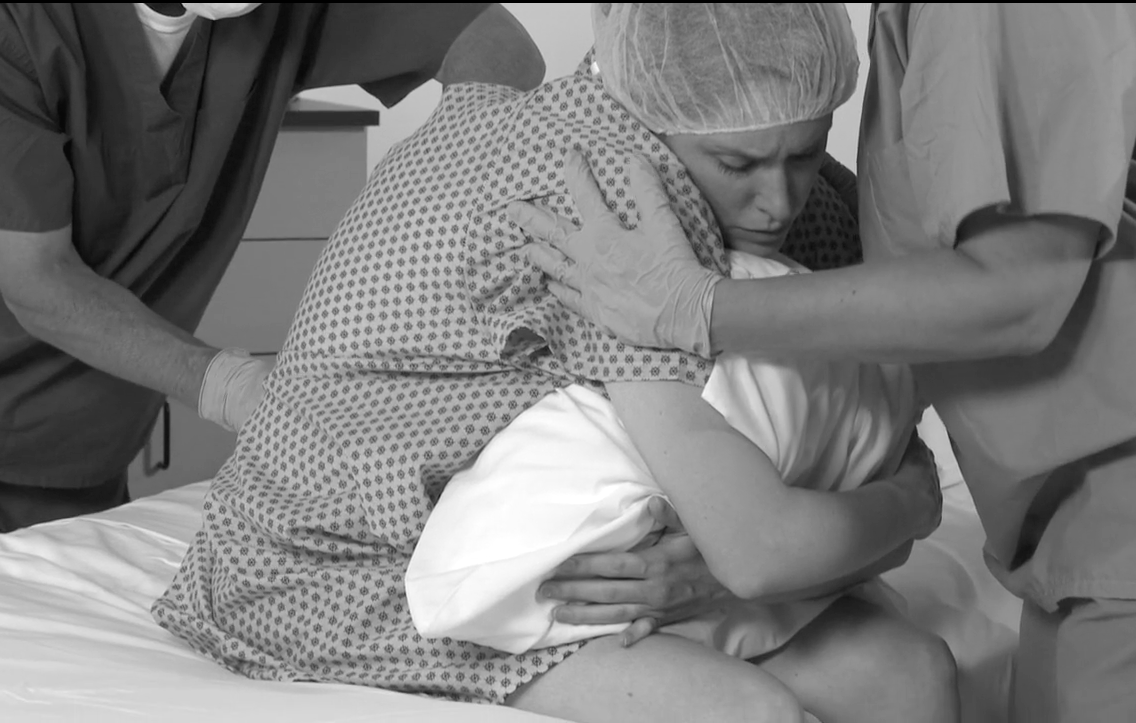
Photo by PHS Medical |
Manual patient handling puts nursing staff at risk of developing musculoskeletal injuries. Prolonged static holds and counter pressure tasks are considered high risk for potential injury, and manual patient handling can cause caregiver injury even when patients are being handled manually in routine situations. According to SPH Medical, the cumulative nature of lifting, pushing, pulling, holding, catching, tugging, boosting, turning and transferring patients can causes micro tears in vertebral discs and joints that over time lead to staff injury.
Patient Positioning Challenges
Before the introduction of the Epidural Positioning Device, nurses and medical staff faced the following unstable situations and safety risks while preparing patients for epidural and spinal block placements:
1. Holding the patient in position in a static hold
2. Non-locking tables or stools
3. Stacking pillows on top of non-locking tables
4. Sedated patients who are incapable of holding the proper position
5. Balancing a stool while attempting to hold a patient
6. Unexpected patient movement
7. Large or obese patients may require several staff to hold in position
Patient Positioning Solved
The Epidural Positioning Device was designed to solve manual patient handling issues by reducing risk for caregivers while increasing patient comfort by creating an ideal position for needle placement. The EPD provides safe and secure patient positioning for Labor & Delivery units, pre-operative care, operating rooms, outpatient surgery, and pain clinics.
Patented in 2001, This revolutionary device features unique torso positioning, exclusive to our design, that moves the spine into an arched position for proper cervical alignment to position patients safely and comfortably during epidural procedures. Manually controlled chest, arm and head support ensures that patients of every body type and size can be accommodated and the back remains immobile during epidural placement.
This article was curated from "EPD: The Original Epidural Positioning Device" by Safe Patient Handling Medical. The entire text can be reviewed here.
